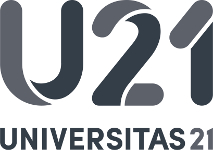Analogue solution offers answers to some of quantum physics’ biggest questions
Posted 1 February, 2023

A new type of analogue computer developed by researchers at UCD and Stanford University could solve some of the most exciting unanswered questions in quantum physics.
In new research (opens in a new window)published in Nature Physics, the collaborating scientists detailed how this ‘quantum simulator’ can simulate interactions between two quantum objects, and can easily be scaled for more complicated systems - offering the opportunity to delve into the tantalising topics of superconductors and other unusual states of matter.
“Certain problems are simply too complex for even the fastest digital classical computers to solve,” said (opens in a new window)Dr Andrew Mitchell, Director of the UCD Centre for Quantum Engineering, Science, and Technology (C-QuEST) and co-author of the paper.
“The accurate simulation of complex quantum materials such as the high-temperature superconductors is a really important example – that kind of computation is far beyond current capabilities because of the exponential computing time and memory requirements needed to simulate the properties of realistic models.
“While we have not yet been able to build an all-purpose programmable quantum computer with sufficient power to solve all of the open problems in physics, what we can now do [with quantum simulators] is build bespoke analogue devices with quantum components that can solve specific quantum physics problems.”
The essential idea behind these specialised analogue devices is to build a hardware solution to the problem rather than writing code for a digital computer.
The new ‘quantum simulator’ architecture involves electronic circuits with nanoscale components whose properties are governed by the laws of quantum mechanics.
These components can be fabricated, and importantly, behave essentially identically to each other - allow for the analogue simulation of quantum materials, where each electronic component in the circuit acts as a proxy for an atom being simulated.
Professor David Goldhaber-Gordon, from the Stanford Institute for Materials and Energy Sciences, said: "We're always making mathematical models that we hope will capture the essence of phenomena we’re interested in, but even if we believe they're correct, they're often not solvable in a reasonable amount of time."
With a quantum simulator "we have these knobs to turn that no one's ever had before," he added.
Stanford’s Experimental Nanoscience Group, led by Professor Goldhaber-Gordon, built and operated the device, while the theory and modelling was done by Dr Mitchell, from the UCD School of Physics.
By: David Kearns, Digital Journalist / Media Officer, UCD University Relations (with materials from Caroline Byrne, UCD Research and Innovation)
To contact the UCD News & Content Team, email: newsdesk@ucd.ie






